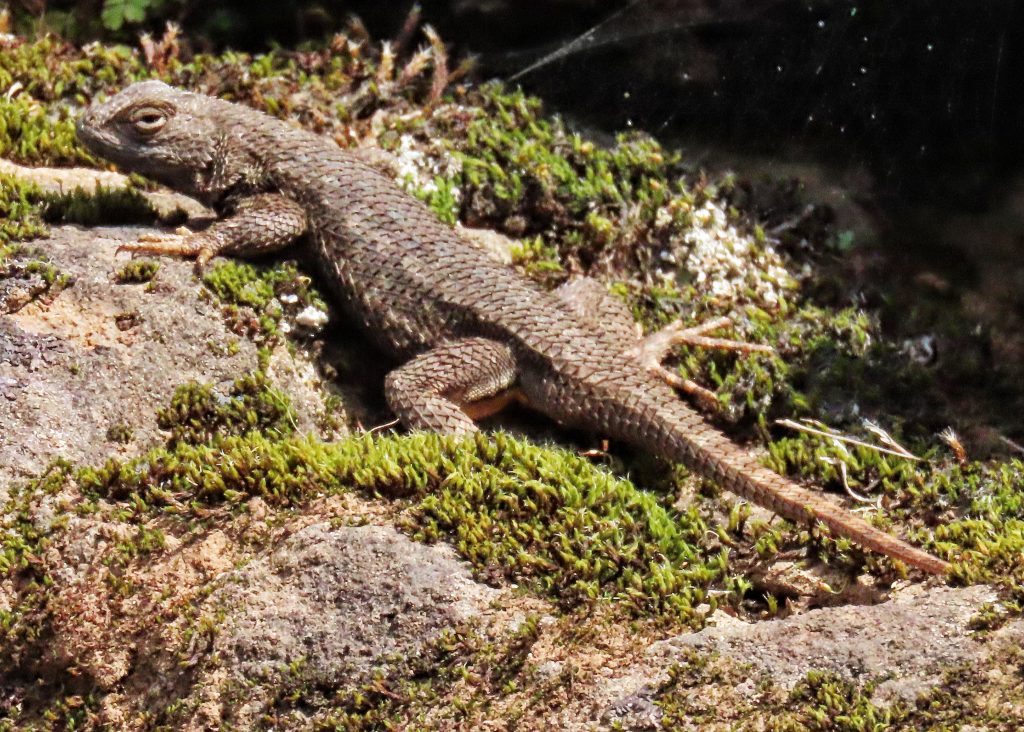
Western Fence Lizards are, by far, the lizard species I most frequently encounter. Although those encounters mostly consist of a flash of movement in the corner of my vision that is confirmed as a lizard only by the disappearance of a tail around a corner of rock. But when I exercise some stealth I can often observe them for extended periods of time, because they are not fidgety lizards. My experience of them is that they are either motionless, or moving quickly. Although that could also be said about most lizards, I suppose.
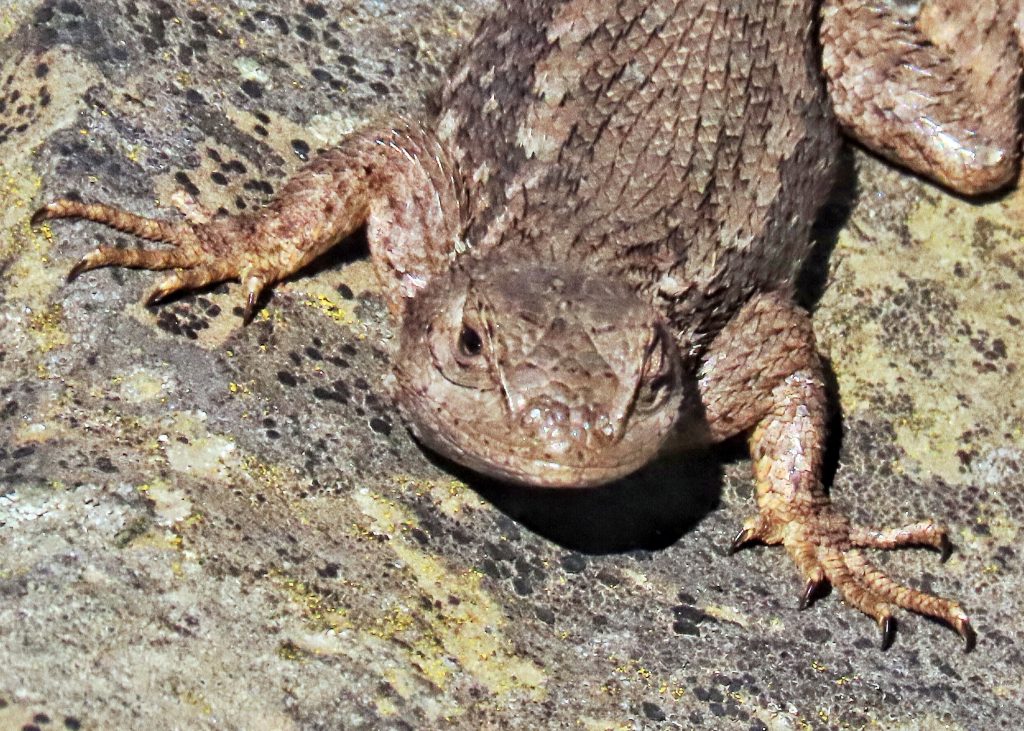
One very cool thing about Sceloporus occidentalis is that they have a protein in their blood that kills the bacteria responsible for Lyme Disease, so that when infected ticks feed on them, which they commonly do in areas where they coexist, the bacteria are killed and can’t be passed on to their next victim.
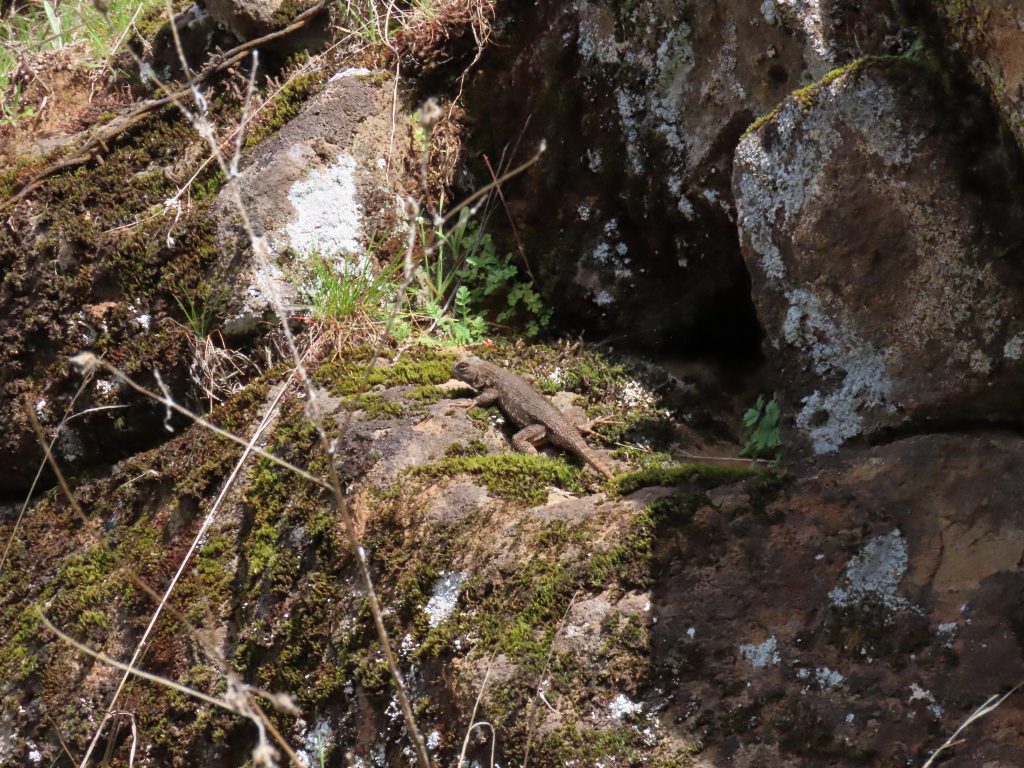
Like many reptiles and amphibians Western Fence Lizards can lose their tails (which detach fairly easily) and regenerate a new one. This usually takes 3-5 weeks, and the new tail is shorter than the old one. Interestingly, females often select for longer tails when mating with the males (along with brighter and bolder blue throat patches), possibly because losing a tail may be a sign of a slower or less cautious lizard, genetic traits which may give her young a lower survival rate. “Well the good news is you survived the attack. The bad news is you won’t be finding much female companionship from here on out”.
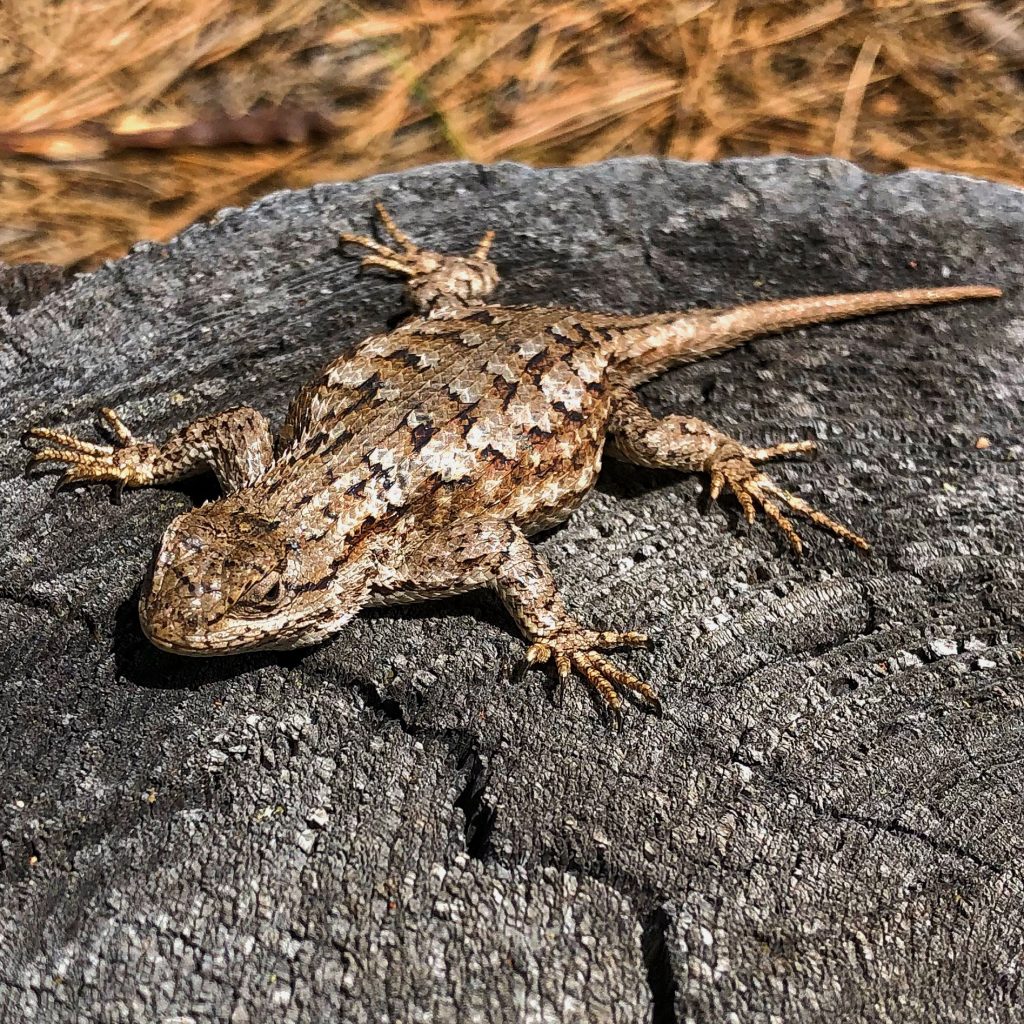
I have never been privy to the males territorial/courtship displays, but apparently it consists of finding an elevated and exposed area and doing head bobbing and push-ups, which expose the blue on their throat and belly. Females that find them attractive then come to them. Males that think they are trespassing respond with an attack.
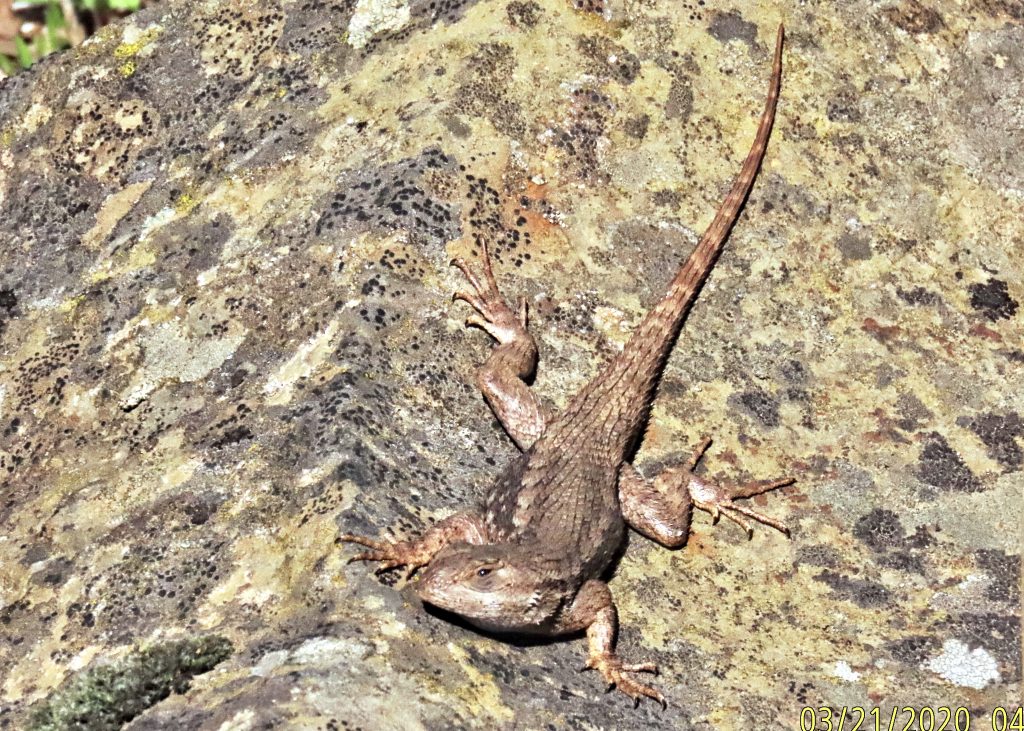
Western Fence Lizards are uncommon in western Washington, although I had a friend who lived near Silver Lake in Cowlitz County who had never seen even one around his place, until they logged the tract of forest next door to him, and suddenly he had lizards everywhere! So there may be more than there are thought to be. I don’t see nearly as many as I’d like to, so it is always a treat when I do, because, despite their mostly drab coloring, reptiles are just so alien and cool! There is something very compelling about their watchfulness, and how self contained they appear to be.
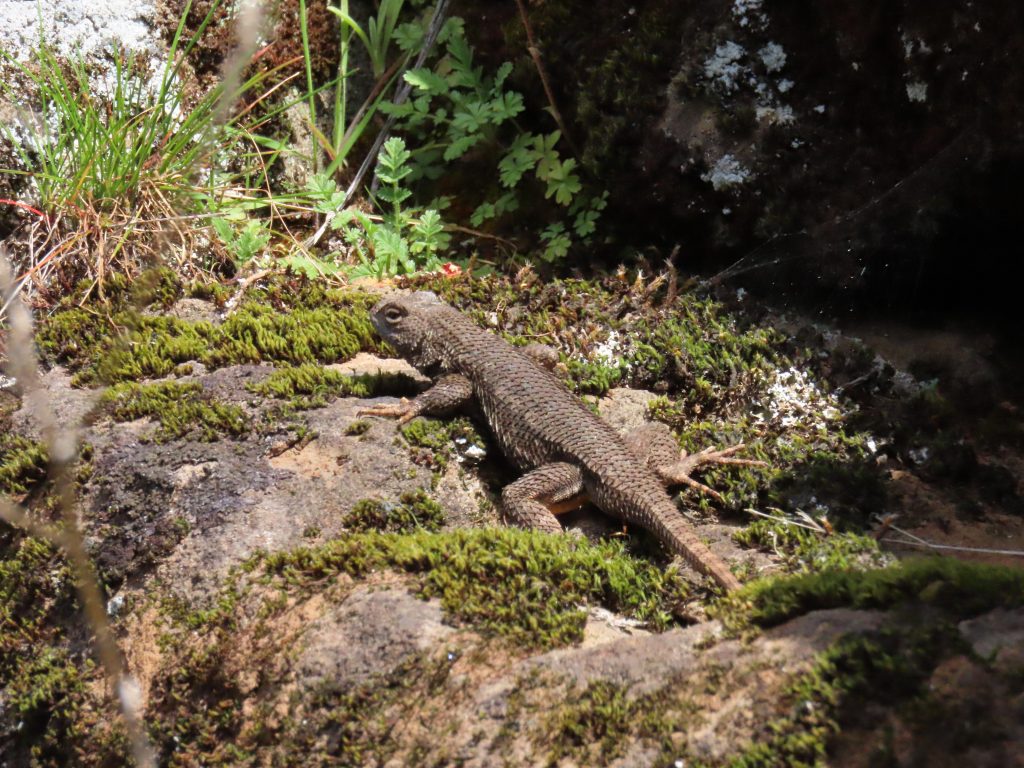
Description-Medium sized (up to 3.9” snout to vent, 8.4” overall) stocky, noticeably spiny lizard in shades of brown, grey, and black; blotches to chevrons of lighter and darker scales on the back; back scales large, strongly keeled, and the keel extends into a spike at the rear; yellow to orange on rear underside of legs; breeding males, and to a lesser extent females, may have blue throats, bellies and ventral sides.
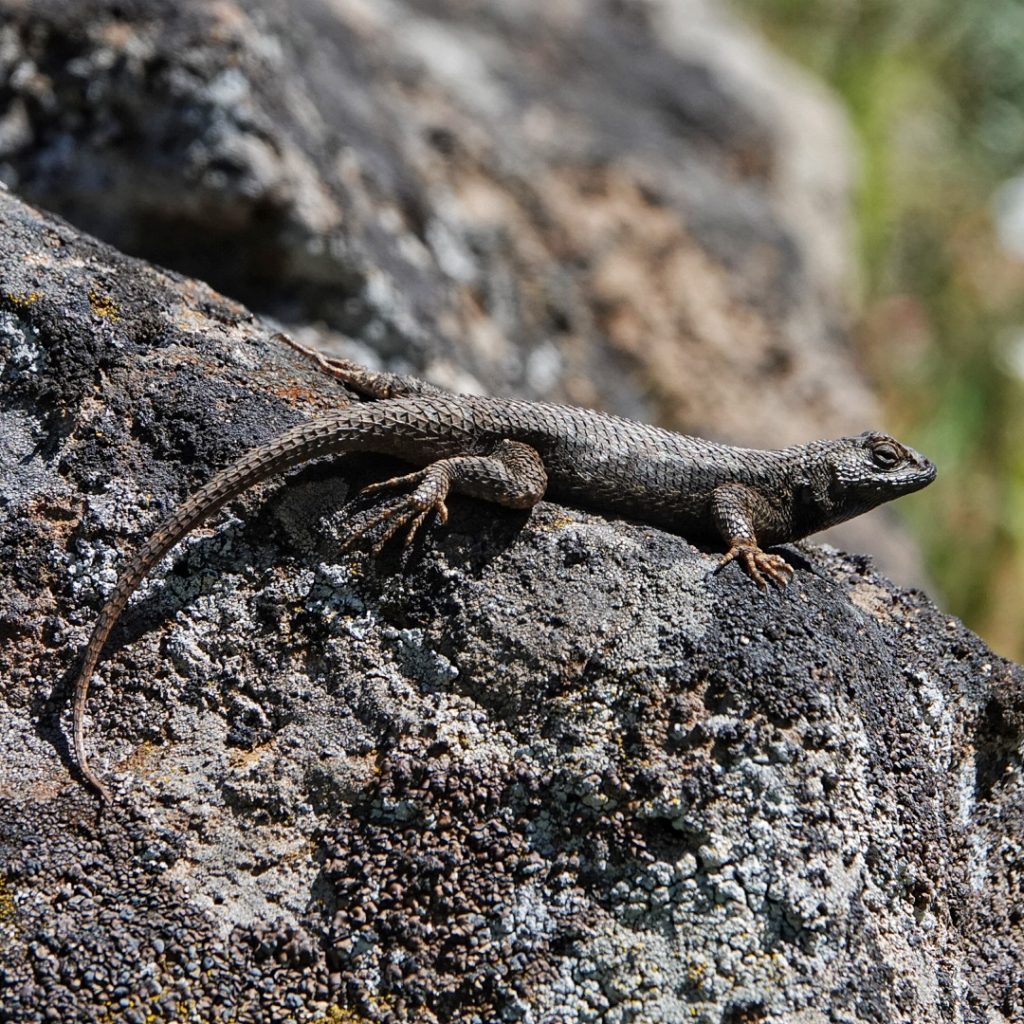
Similar species–S. graciosus (Sagebrush Lizards) have smaller scales, the scales on the back are less keeled and don’t extend into a spike, scales on the back of the thighs are much finer, they lack yellow on the underside of the thighs, they have a black bar on the shoulder, they tend to be less blue centrally, and they are smaller and less stocky; Uta stansburiana (Side-blotched Lizard) lacks any ventral blue blotching, has a gular fold, and much smaller, smoother scales.
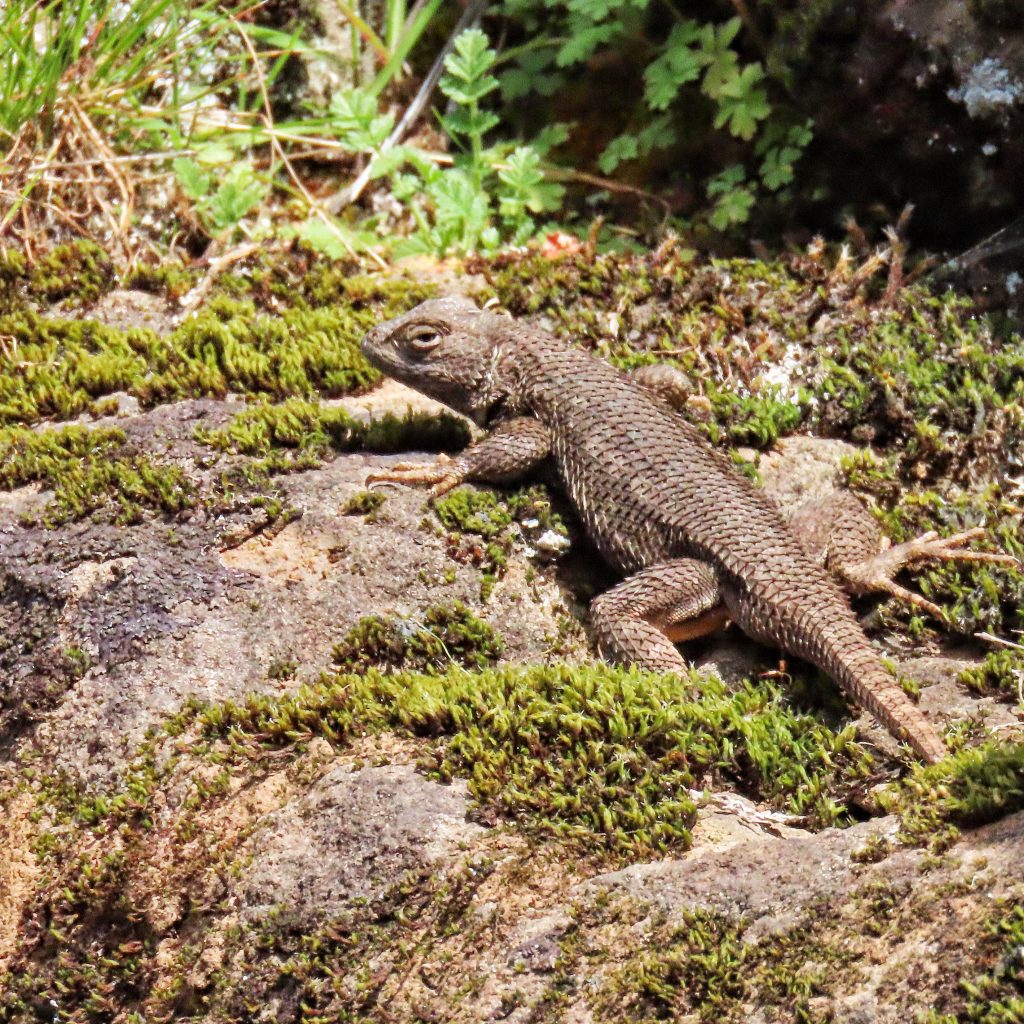
Habitat– Arid to mesic woodlands, conifer forests, grasslands, sagebrush/shrub steppe, and chaparral, up to 7,000’ elevation.
Range-Western US; most of Oregon except alpine and west of the Coast range, n California, se Idaho, mostly on the east slope of the Cascades in Washington and in the Columbia River Gorge; small, scattered populations in western Washington below 1500’ elevation between the Cascades and the Coast Range and around Puget Sound.
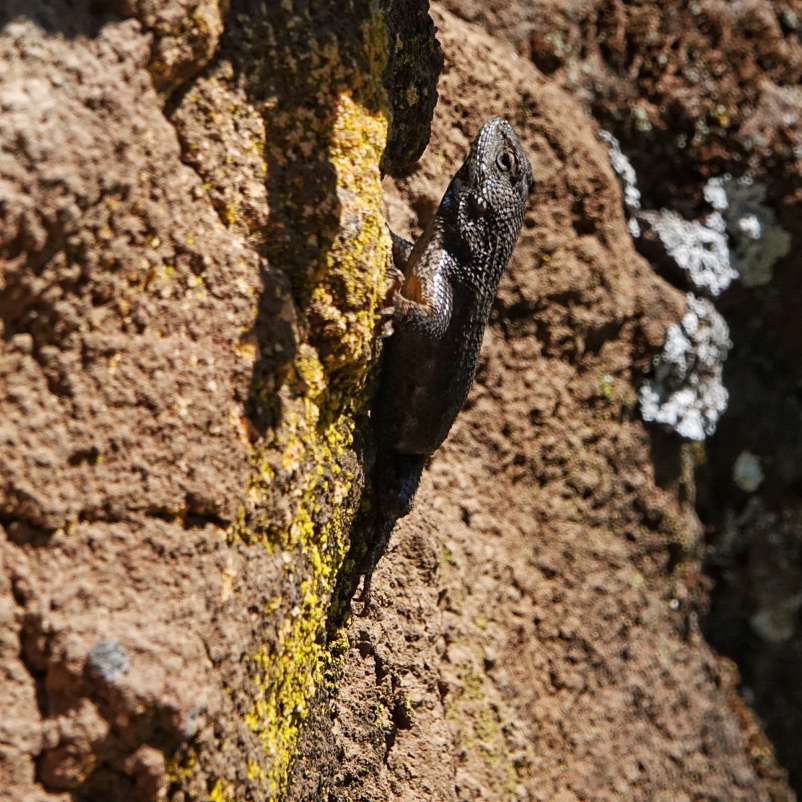
Eats– Insects, spiders, and other invertebrates.
Eaten by-Snakes, alligator lizards, hawks, kestrels, shrikes, coyotes, bobcats, skunks, shrews; basically any carnivore that can catch and subdue them.
Reproduction-Breeding takes place from April to June- females may lay 3 clutches of eggs, with up to 17 eggs per clutch; eggs are buried or covered and recieve no parental guarding; young are born ready to run in July-August; sexual maturity in their second spring.
Adults active-March to November, but only on warm, sunny days at each end of the spectrum; hibernate in crevices and under woody debris in winter.
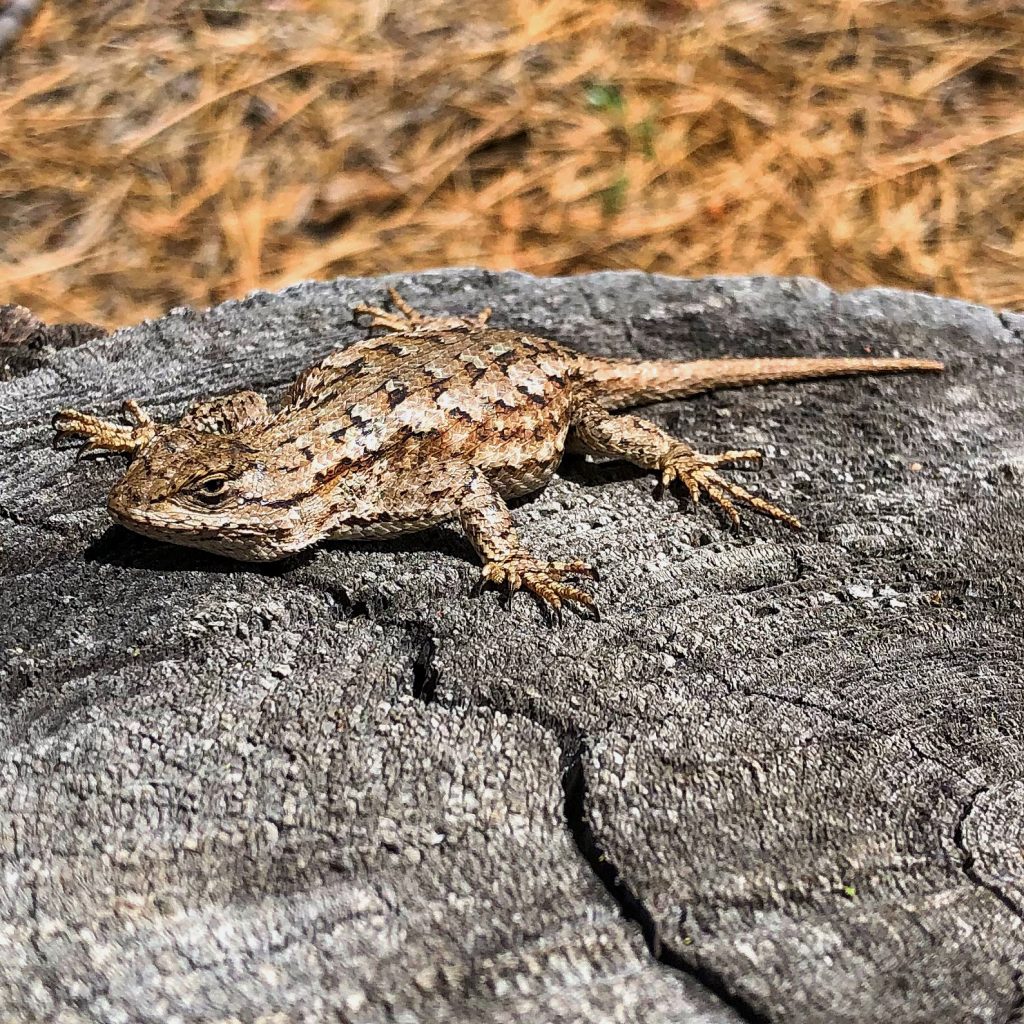
Etymology of names– Sceloporus is from the Greek and translates as ‘leg pores’, a reference to the pores on the underside of the hind legs on lizards in this genus. The specific epithet occidentalis is Latin for ‘of the west’, referring to this species’ distribution in the western US. Fence lizards alludes to their tendency to run up fence posts (or trees) to escape threats.
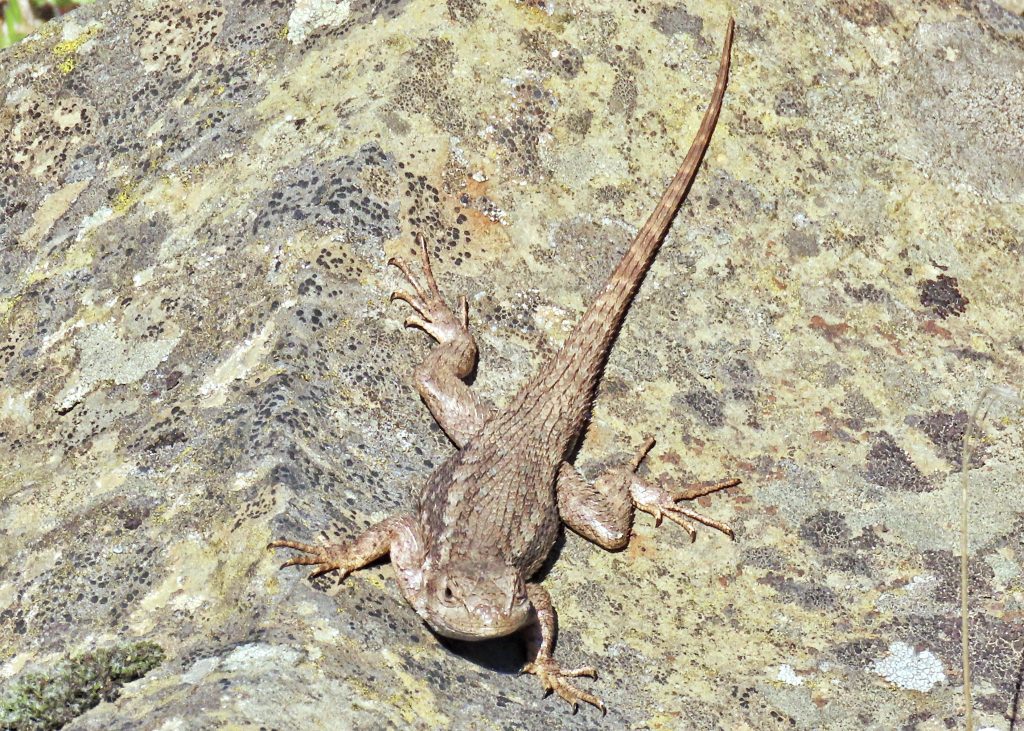
http://californiaherps.com/lizards/pages/s.o.occidentalis.html
https://animalia.bio/western-fence-lizard
https://en.m.wikipedia.org/wiki/Gular_fold
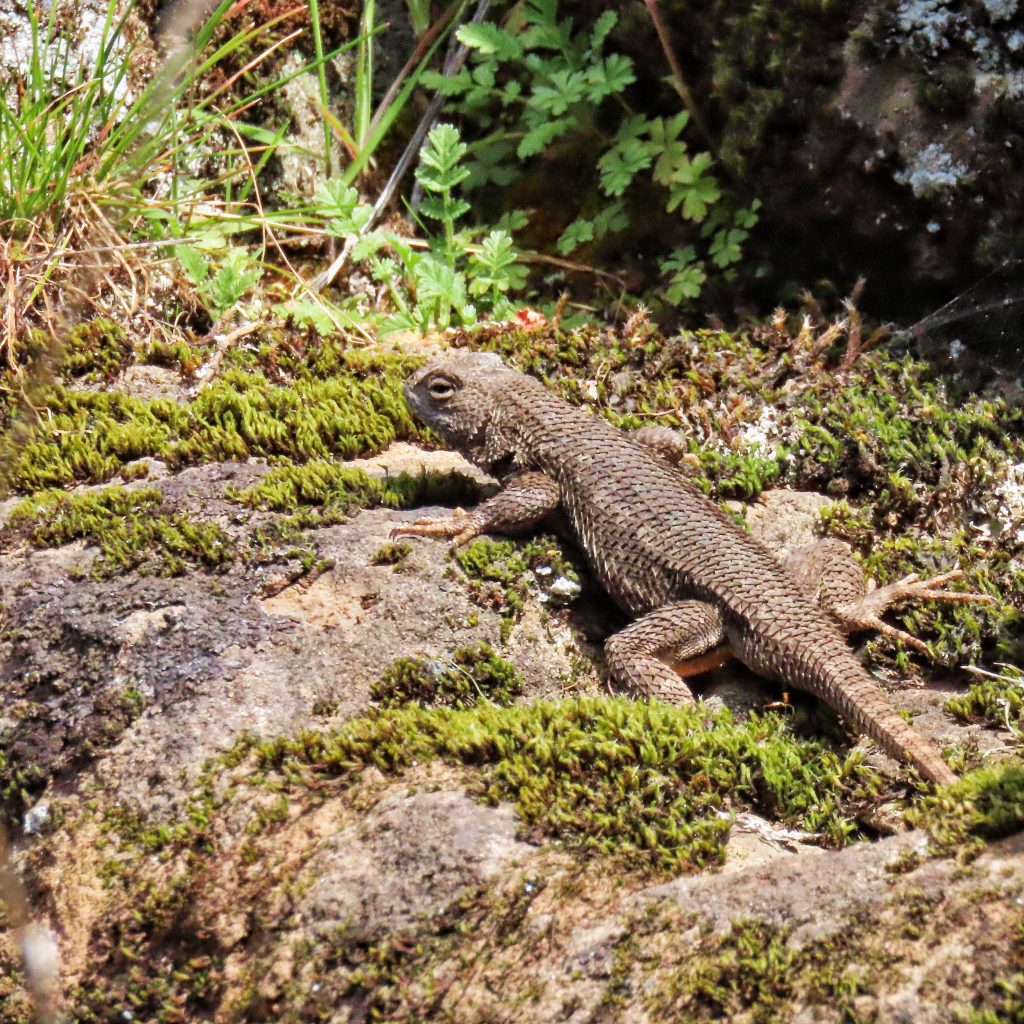
Wow – I wish we could evolve a protein that kills Lyme Disease!
Me too! Just hope they find a Western Fence Lizard before they find me!